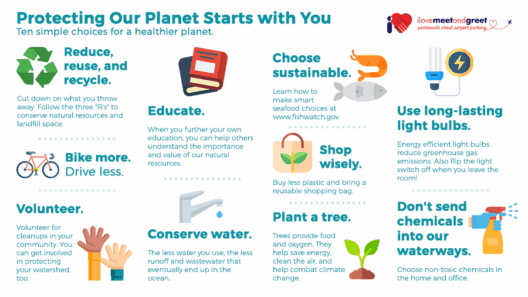In our pursuit of sustainability, the intricate dance of energy conservation emerges as a crucial frontier. Much like the interwoven strands of a spider’s web, every action we take ripples through the ecosystem, shaping our environment in profound ways. Today, we delve into an essential query: how can we conserve chemical, sound, and light energy? Each category of energy serves as a chapter in the vast story of environmental stewardship, revealing both challenges and solutions.
Chemical Energy Conservation
Chemical energy, stored within the bonds of molecules, fuels our lives through various means—be it through fossil fuels, battery power, or organic materials. To conserve this energy is akin to safeguarding a precious resource, one that has the power to sustain civilization or contribute to its downfall. The combustion of fossil fuels, largely composed of carbon, releases not only energy but detrimental gases, leading to climate change and air pollution. In contrast, embracing renewable energy sources, such as solar and wind, emerges as a paramount strategy.
Integrating smart technology into our homes can catalyze this transition. Smart thermostats and energy-efficient appliances function as vigilant sentinels, optimizing energy consumption. For instance, when you leave a room, these devices can subtly adjust heating and cooling, drawing upon chemical energy only as needed. The elegance of inverting traditional energy use transforms our relationship with resources. It’s a call to action—a reminder that even small adjustments can yield significant results, akin to rolling a snowball down a hill.
Furthermore, advocating for plant-based diets can dramatically conserve chemical energy utilized in food production. The livestock industry is infamous for its high energy consumption and greenhouse gas emissions. Shifting toward vegetarian or vegan lifestyles not only reduces our chemical energy footprint but also promotes healthier living. This dietary transition represents not merely a change on the plate but a profound shift in our ethical stance toward the planet.
Sound Energy Conservation
Sound energy, often considered an overlooked variant in energy discussions, plays a captivating yet crucial role in our daily lives. From the sound of laughter to the hum of machinery, sound energy captivates the senses while possessing the potential for conservation. Reducing sound energy waste translates into more than just lower noise levels; it enhances overall well-being and preserves the natural soundscapes that enrich our existence.
Consider the analogy of a bustling city versus a tranquil forest. The former, filled with clamor and chaos, consumes sound energy extravagantly, often leading to auditory pollution. Implementing soundproofing materials in buildings and promoting quieter technologies can significantly diminish unnecessary sound production. Such innovations aren’t just about maintaining peace; they act as a buffer for mental health, enhancing cognitive functions and fostering creativity.
Moreover, public campaigns advocating for quieter vehicles and the use of public transportation can reduce not only sound energy but also its associated carbon footprints. When we opt for traveling by bike or foot, we do not merely escape the din; we foster a serene connection with our environment. Sound energy conservation becomes an integral part of a holistic approach to sustainability, blending seamlessly into our daily lives.
Light Energy Conservation
Light energy, the radiant force that illuminates our world, deserves special attention in our conservation efforts. Every flick of a switch can summon forth a potent force, capable of transforming spaces and moods. However, light energy can be deceptively luxurious—its consumption often goes unchecked. To conserve light energy is to cultivate mindfulness in our interactions with illumination.
Utilizing natural light is an essential practice, reminiscent of sunbeams caressing a landscape at dawn. By optimizing window placements and adopting reflective surfaces, we can bathe our spaces in natural luminosity, reducing reliance on electric sources. Embracing technologies such as LED bulbs serves as a beacon of hope for energy efficiency. These luminous gems consume significantly less power than their incandescent predecessors, exuding brilliance without overpowering the system.
The philosophy of “light harvesting” finds its place here. This method involves collecting and redistributing natural light, endlessly illuminating spaces while consuming minimal electric energy. Think of it as the architectural equivalent of watering a plant—essential and sustaining. Encouraging buildings to incorporate skylights and light tubes allows this phenomenon to thrive, highlighting the indelible connection between nature and design.
Integrative Strategies for Energy Conservation
Conserving chemical, sound, and light energy is not merely an individual endeavor but a communal challenge requiring collective action. We stand at the crossroads of innovation and tradition. Through education and advocacy, we can promote energy-efficient practices while inspiring others to take part. Community initiatives centered around energy conservation resonate like chords in a symphony—when harmonized, they create a resonant impact.
As we move toward a more sustainable future, every bit of effort counts. The collective consciousness surrounding energy conservation must be amplified through collaborative spirit. Local workshops, sustainability forums, and energy audits can act as catalysts for change, empowering individuals to tap into their potential. We have the ability to weave our narratives into the fabric of a more energy-conscious world.
In conclusion, conserving chemical, sound, and light energy is a multifaceted tapestry that requires our commitment. Every choice we make, however minuscule it may seem, contributes to the larger narrative of sustainability. Thus, as stewards of our precious planet, we must dance to the pulse of energy conservation, hand in hand with innovation and mindful practices, crafting a brighter future for generations yet to come.






